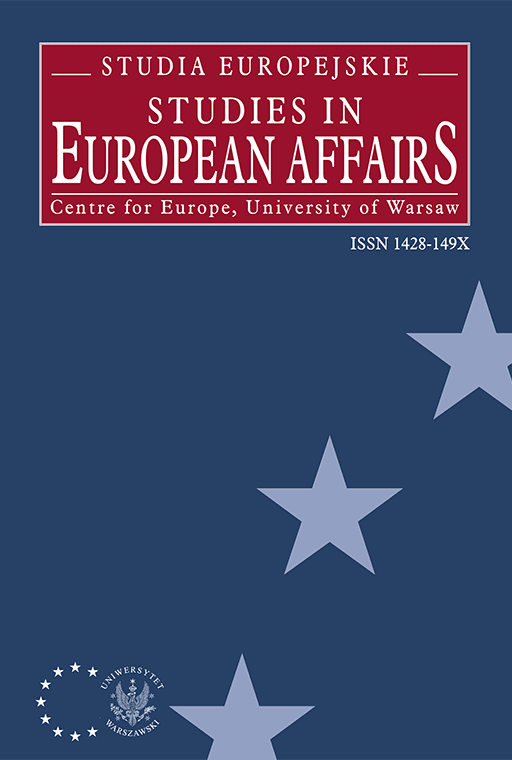
ISSUE: 3/2012
- Volume 63
- Number 3
- 2012
Subscribe NEWSLETTER
Studia Europejskie –
Studies in European Affairs
ISSN: 1428-149X
e-ISSN: 2719-3780
License
Articles published in the journal are under a Creative Commons Attribution – Non Commercial – No Derivatives 4.0 International License
Dwa modele wykładni prounijnej
Two Models of Pro-EU Interpretation of national law
Abstract
The article addresses the issue of the interpretation of national law in conformity with the law of the European Union. Specifically, the aim of the article is to elucidate how, in specific instances, this type of interpretation proceeds, i.e. to reveal the mode according to which a national court and official should interpret national provisions in order to assure that they conform to the requirements of EU law. Thus, two theoretical models of conforming interpretation have been distinguished. The first, which is deemed to be typical of Polish scholars, is based on the concept of a final norm (a norm devoted to the facts of a pending case), or, actually, two norms: one stemming from EU law and the second from national laws. The former takes precedence over the latter, becoming the basis for a decision in the case sub judice, inasmuch as this does not lead to excessive interference of EU law in the national legal system. The second model has been proposed by the Author, who called it ‘the model of the harmonisation of contexts’ or of a ‘single sack’. Here, the construction of national laws in conformity with EU law is done without the participation of any norms, whether general or individual. A national court (official) takes into account factors which influence the application of the national law in specific instances and, at the same time, factors which influence the application of relevant provisions of EU laws – as it would happen in the ‘single sack’ – so far as they do not interfere in the national legal order too much. The first model, at least in theory, is able to provide the EU law with the maximum efficacy and unity. However, national courts and officials may find it difficult to use it in practice. The second model is far more convenient from the perspective of judicial application at the national level, but it does not guarantee full conformity of the law of the Member States with EU law, even in case when that conformity is possible in terms of the limits set for conforming interpretation.
Language: Polish
Pages: 93-110
How to Cite:
Harvard
Koszowski, M. (2012) "Dwa modele wykładni prounijnej". Studia Europejskie – Studies in European Affairs, 3/2012, pp. 93-110.